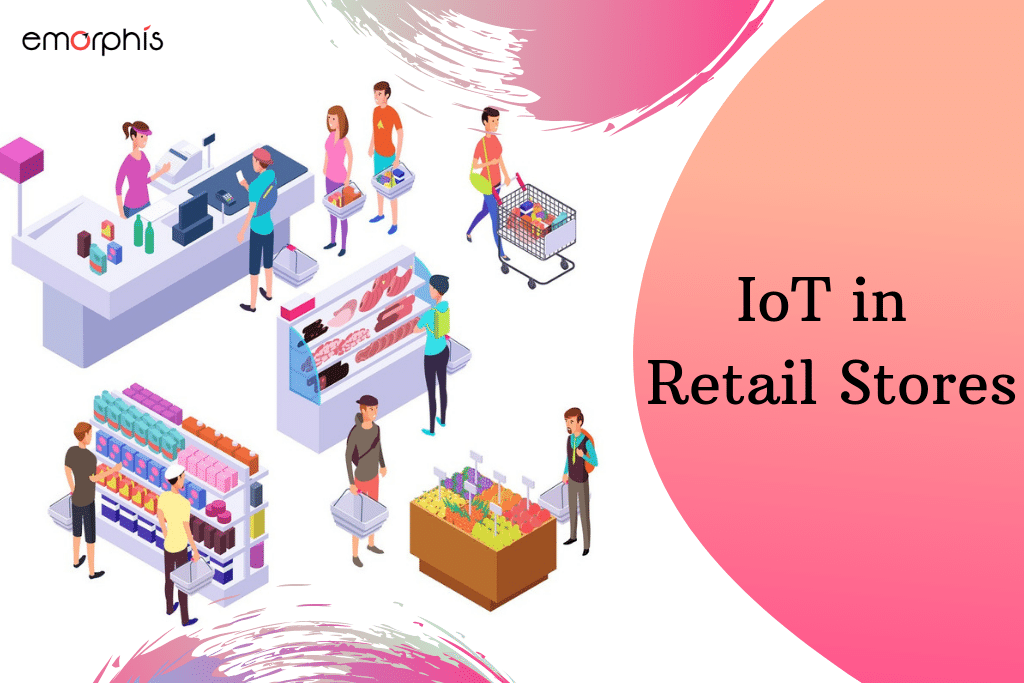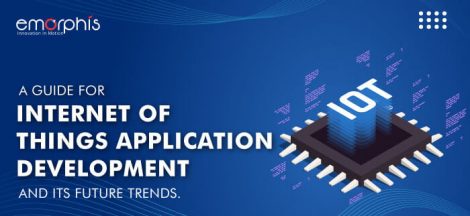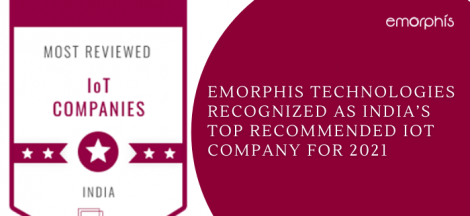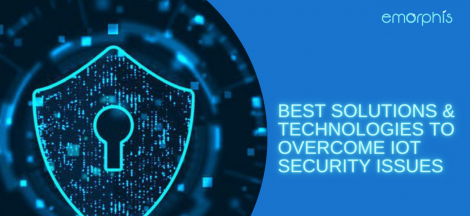Everyday physical objects are becoming exceptionally identifiable and embedded with the ability to connect with other networks and devices. The Internet of Things (IoT), in true essence, it is the technique of connecting different networks of together of physical devices (also referred as “smart devices” and connected devices), buildings, and other items, inserted with sensors, actuators, electronics, software and network connectivity that enable them to accumulate and exchange data.
Internet of Things (IoT) is driving revolution and new opportunities by bringing every consumer, object, and activity into the digital realm. At the same time, leading businesses are making many changes within their organisations and enterprises by digitizing their employees, services, process, and product.
Suppose you have gone for shopping to the shelf, from where you picked up the pants, meanwhile, take notes of your purchase and sends that information to the back-end stock inventory system, so the retail store’s manager has the information when to re-stock.
When you’re finished with your shopping, you leave the store instantly. Your items are scanned by the sensors as you leave and added up — the final price is then deducted from your cell-phone payment app. Since you’ve shopped there recently, you may receive the discount.
It may seem to be imaginary but this experience is closer than you think, with the IoT app development, which produces a connection between internet-connected physical devices. The above scenario has been explained from a customer’s point of view, but it’s important to understand how deeply IoT can affect the retail store owners, its employees and also its customer’s experience.
IoT technology can reduce inventory inaccuracy, enhance the supply chain management, decrease labor costs and other aspects. Ultimately, IoT can help your traditional organizational process to compete with today’s online-first shopping world, by exponentially improving customer experience and decreasing irrelevant expenses.
There are a number of IoT related benefits in the retail industry:-
Improving the Customer Experience to Another level
IoT creates an opportunity for retailers to promote an augmented ecosystem that connects both physical and digital worlds, granting bidirectional, real-time interaction with consumers both inside and outside the store so that we could have the data on their experience while shopping, as it will help us in improving our services in a better way.
Smart Shelves
The employees need to focused on keeping track of stocks to ensure they are always in stock and also checking that the items are never misplaced on different shelves. You can use smart shelves to robotize both of the tasks, while simultaneously identifying potential theft.
Smart shelves are fitted with weight sensors and use of Radio Frequency Identification (RFID) tags and readers to scan the products and items on both display and stock shelves. Smart Shelves gives you the information when items are running low or when items are not placed in order on a shelf, which makes the inventory movement more precise and cost-effective. Additionally, each RFID tag will be connected to a reader, so that Smart Shelves are able to detect in-store theft — saving money on cameras and security personnel.
Optimizing Supply Chain Management
While retail stores can already track products without the help of IoT but this information is very limited. With RFID and GPS sensors, you can use IoT to obtain more precise data and information about the products, like the temperature at which the product is being stored and how long it spent in carriage. You can use that data to improve the quality of transportation and avoiding a hefty loss.
Digital signage and IoT: New Engagement Opportunities
Digital signage is an important area where the blending with IoT app development leads to new forms of commitment in the retail industry. With the use of digital signage in IoT, personalization and information is necessary, thanks to the connection with sensors and data analysis, for instance, based on gesture recognition by different data-generating IoT-enabled devices, depends on the situation. It is one of the many ways where retailers use to connect digital and physical, certainly when the touch is involved.
Conclusion
It’s important for retailers to consider taking steps now to lay a foundation for IoT and a better ecosystem. The biggest challenge with IoT is the speedy progression of the scope and variety of technologies which can be used in a connected ecosystem. In retail specifically, the biggest and immediate challenge for organizations to conquer is analyzing, managing and acting on the bundle of data pouring in and from all the connected devices. The time to discharge IoT is now. It addresses one of the most critical challenges – how to cater a personal, smooth and differentiated experience for customers. Retailers who take the first step in this space stand to gain an important advantage in this existing competitive environment. Our own perspective will continue to evolve and grow and we expect to observe additional perspectives further. One thing is however clear that retailers are required to be broad in their thinking, consider innovative applications, and use supporting technologies.







